
How to create a cat-friendly spring garden

Dr Jessica May, FirstVet vet
23 March 2022 | 5 minutes read
Spring is on the horizon, which means your cat may be ready to get outdoors and feel the wind in their fur once more. If your kitty enjoys a prowl around the garden, check out FirstVet Dr Jessica May’s top tips for making your outside space as safe and cat-friendly as possible.
Table of contents
- What spring garden plants and flowers are cat-friendly?
> Are roses safe or poisonous to cats?
> Are sunflowers safe or toxic to cats?
> Are lavender plants safe for cats?
> Other cat-friendly plants and flowers - What outdoor plants and flowers are poisonous to cats?
> Are daffodils poisonous to cats?
> Are tulips poisonous to cats?
> Are daisies poisonous to cats?
> Other spring plants and flowers that are toxic to cats - Other ways to make your garden cat-friendly
> Is lawn fertilizer and weed killer safe for cats? - How can I tell if my cat has been poisoned in the garden?
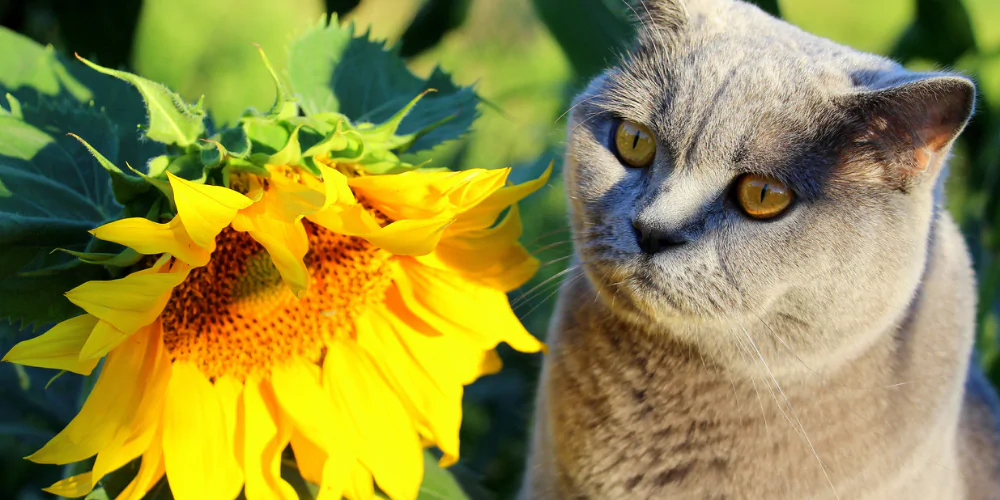
What spring garden plants and flowers are cat-friendly?
Let’s face it, after those dreary and wet winter months, your garden may be in need of a good facelift. But before you pull on those gloves, wrestle some weeds, and start adding some colour, you’ll want to check which plants and flowers are cat-friendly.
The good news is there’s lots of choices out there – here’s an in-depth list from Cats Protection.
> Are roses safe or poisonous to cats?
The classic rose is safe for cats, so feel free to plant these gorgeous blooms around your outdoor space.
> Are sunflowers safe or toxic to cats?
Sunflowers are a safe choice to grow around your cats, so go ahead and bring a pop of sunshine into your spring garden.
> Are lavender plants safe for cats?
Lavender is a tricky one, as it’s safe for your cat to smell, but has compounds that are toxic if eaten. If you’re unsure whether your kitty could be tempted by a nibble, keep it out of your garden.
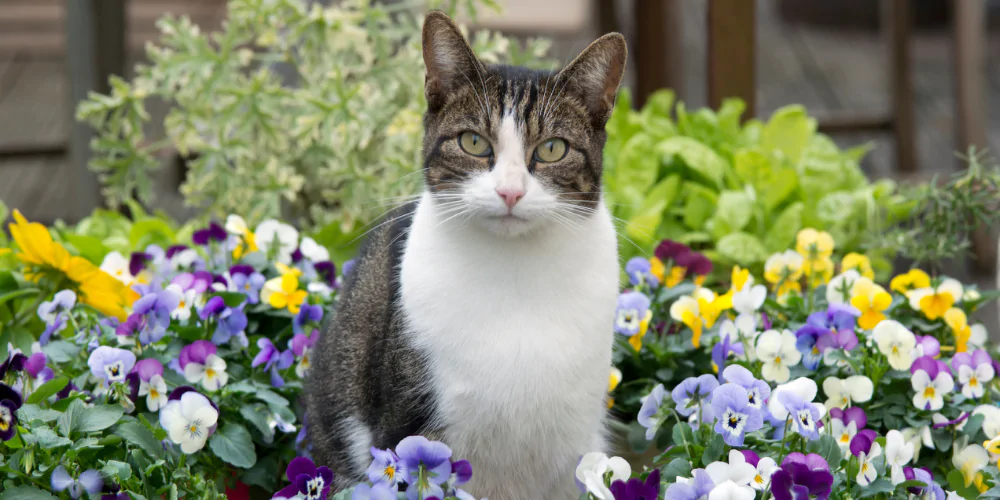
> Other cat-friendly plants and flowers
Here’s some springtime favourites to liven up your garden in a feline-friendly way. There’s even a few picks for your herb garden:
- Alyssum
- Forget-me-not
- Forsythia
- Grape hyacinth
- Pansy and viola
- Rosemary
- Sage
- Wallflower
You could also treat your cat by planting some catnip for them. Once grown, you can put it inside toys and in the house to help calm your kitty.
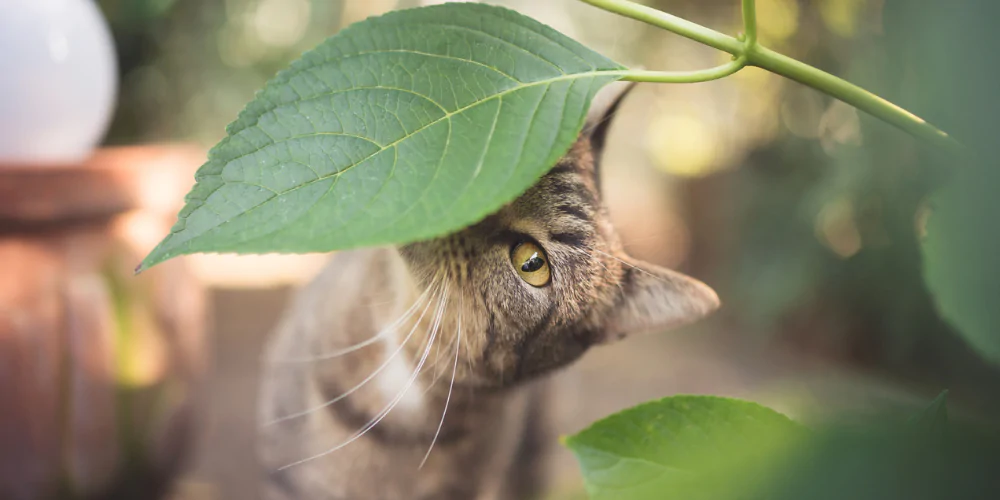
What outdoor plants and flowers are poisonous to cats?
Alongside the colourful, cat-safe options, there’s also quite a few plants and flowers which aren’t a good choice for feline ruled households.
Cats Protection also has a long list of toxic and risky plants for cats, so take a look if you have something specific in mind.
> Are daffodils poisonous to cats?
We’re sorry to let the cat out of the bag on this one. Yep, this springtime classic is indeed toxic for cats. If you’re a daffodil lover, perhaps swap to a metal version instead?
> Are tulips poisonous to cats?
Tulip bulbs are the most toxic part of the plant, but any part of the tulip is a risk for your kitty, so steer clear of these in your spring garden.
> Are daisies poisonous to cats?
Daisies could be irritating to your cat and harmful if eaten in large amounts. Better to be safe than sorry and leave them out of your planting plans.
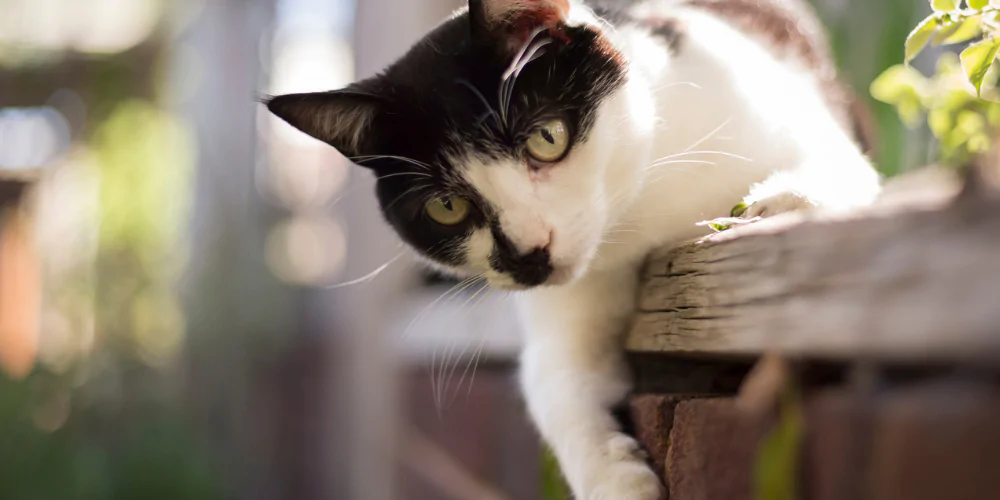
> Other spring plants and flowers that are toxic to cats
Below are just a few popular spring planting choices that could be harmful to your feline:
- Allium
- Crocus
- Foxglove
- Helleborus
- Hyacinth (bulb)
- Lily
- Primrose
- Rhododendron
- Snowdrop
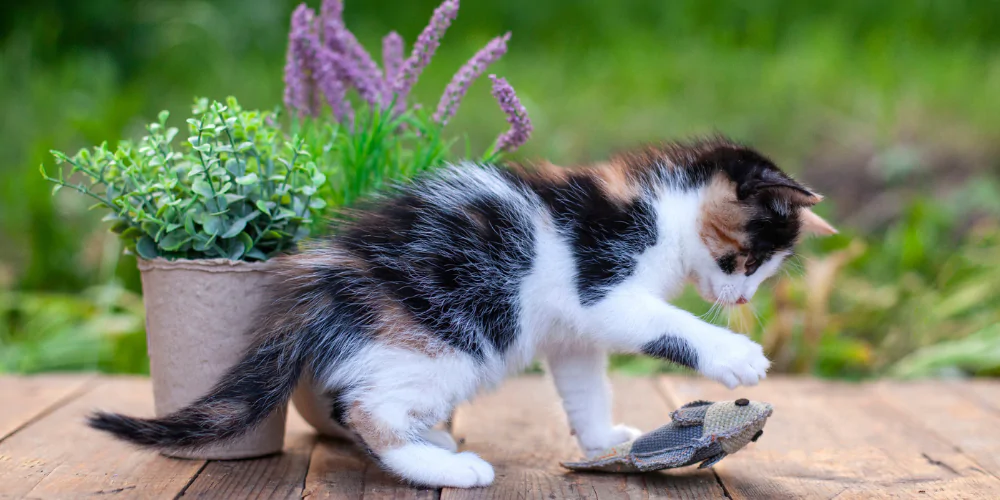
Other ways to make your garden cat-friendly
Happy you’ve picked some colourful yet cat-safe plants and flowers? It’s time to do a few extra bits to make your garden a friendly space for your favourite feline:
- Lock away those plant and flower bulbs in cat-proof storage
- Check for any gaps in your fencing
- Add in some hiding spaces if your cat needs a place to calm down and unwind
- Create a private toilet area with fresh soil or gravel
- Add some weatherproof outdoor toys to keep them stimulated
- Check your cat is up to date with all of their vaccinations
> Is lawn fertilizer and weed killer safe for cats?
Many lawn fertilizers and weed killers have harmful chemicals for cats that could be licked up or picked up on their fur or paws. Some companies offer ‘pet safe’ options, but you’ll want to check these with your vet before using them.
To de-weed your garden in a cat-safe way, try hand weeding your lawn and pressure washing hard surfaces.
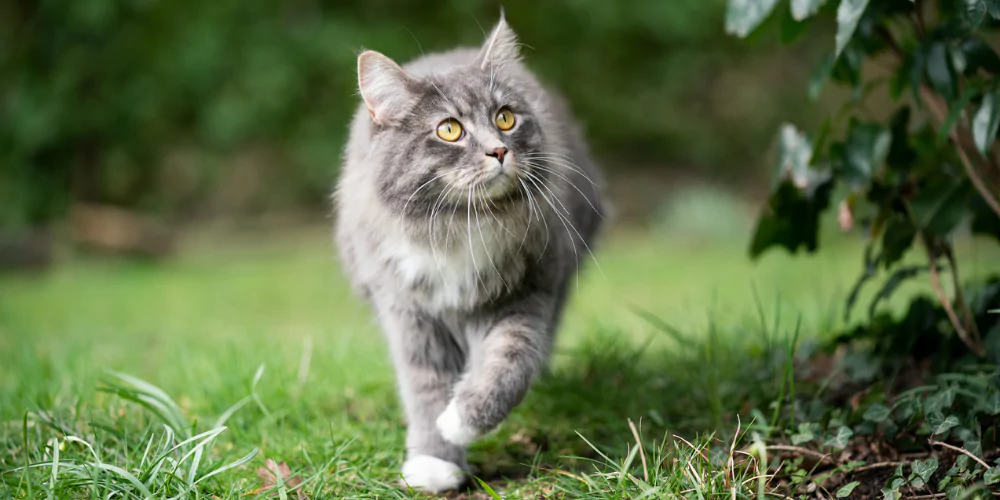
How can I tell if my cat has been poisoned in the garden?
If you’re worried your cat has accidentally chewed a toxic plant or flower, speak to your vet straight away. Petsure customers have free 24/7 access to video calls with a FirstVet vet if you’re ever in need of expert advice.
To help the vet give more tailored advice:
- Take a picture of the plant or flower you think they’ve eaten
- Try and guess how much has been eaten
- Note (if possible) how long it’s been since they ate it
Here’s some of the most common signs of poisoning in cats:
- Weakness
- Difficulty breathing
- Excessive thirst
- Vomiting and diarrhoea
- Lethargy
- Confusion
Protect your cat for their outdoor adventures with flexible pet insurance from Petsure.


